Text
Welcome
I am really glad you're here. I am an artist from Alabama and a serial hobbyist with mad hyper-fixation abilities. My work is expressed through many different art forms and I love experimenting with new mediums.
Here you will find my originals in prose, poetry, paintings, photography, and needlework (I'm sure I'll be adding some other mediums of expression within a few months).
The last time I was on Tumblr was in 2015. I'm back because it's the only place I've found that doesn't give deference to one art form over another. In 2015, I was a recovering study abroad junkie with nothing but a lust for travel and newness of life. In 2024, I am being honest.
In this burgeoning post-pandemic era, I am dialing my focus in on three main areas of study:
My Book: Preliminarily titled, "The Scientific Method of Turning Thirty," is a memoir/collection of essays/nonfiction commentary about coming of age at any age in the deep south.
Series One, Alabama the Miserable: a study on the beauty and misery of this wildly ignorant state. Art Forms: Paintings and Photography
My Coming Out Story: A collection of poems written over a decade, illustrating a repressed southerner's fear of being herself.
Along with glimpses into my three ongoing projects, I'll be sharing past works and small pieces born of exploratory creativity.
I would love to know you and engage with your work. I'm here to share and engage.
#artists on tumblr#painters of tumblr#women authors#writers on tumblr#female writers#lgbtqui#lgbtq community#lgbtq#queer community#photography#oil painting#painting#books#original story#original post#welcome
1 note
·
View note
Text
The Scientific Method Turning Thirty: Chapter One - Part Three of Three, by @henriettasyarn
According to the internet, there are generally seven steps to the scientific method: 1. Discern the burning question, 2. Research said question, 3. Determine a hypothesis to answer said question, 4. Test your hypothesis, 5. Analyze the results, 6. Form your conclusion, and 7. Communication. In 2008, when I was in ninth grade, I distinctly remember there only being five steps. The research in step two came before the method. This implication promoted unhealthy perfectionism for those of us who struggled with executive dysfunction. Your burning question has to be perfectly tailored before you can even start your method. There’s no room for change after you begin; you must know exactly what you want to discover in your project before it even begins. Of course, this isn’t true, nor has it ever been true; it's just the story I told myself. Regardless of the order or number of steps in the scientific method, for a 14 year-old girl with undiagnosed ADHD, my story was the gospel truth.
I recently read a book called “There Are No Grown-Ups,” by Pamela Druckerman. I came across her work after reading her debut title, “Bringing Up Bébé,” during my second round of motherhood hyper-fixation. I love her writing style. It’s research based, yet forgiving. It’s personal, yet experimental with serious topics cloaked in everyday humor. Druckerman’s work is methodical and I could relate, even as a decade off from the targeted audience. Upon completion, I immediately started looking for similar titles made specifically for thirty-somethings. I was left wanting. According to the numerous podcasts and self-help titles for our demographic, we are unsatisfied, paralyzed with anxiety and need constant uplifting, radically optimistic, reminders that our lives are not coming to an end. The cyclical theme of thirty-something literature and media is, “you’ve got plenty of time!” God forbid a newly ordained thirty year old expresses any sort of regret over their current accomplishments in front of a forty-plus-er. Scoffing will undoubtedly ensue.
The world of thirty-something-coming-of-age-not-so-midlife advice is frustrating and dishonest, to put it simply. I listened to a podcast this past week that was formed as a new kind of community for thirty-something girlies. It’s mission statement is, “to help those in their late twenties and thirties break free from what society says turning 30 should look like, accept where they are and to feel empowered to take positive steps forward at this pivotal time.” It sounds good, right? It sounds real, I think. The album cover is a picture of the host, a cute, tanned blondie, who just heard the most hilarious joke of her life, standing in front of a rustic, wood paneled wall. She is doing great and I’m happy for her, so please don’t misconstrue my criticism as fellow female bashing. This woman speaks with confidence and poise. She is helping many women overcome the struggle and doom of thirty-hood and she is very clearly a boss-bitch. I started with the most recent episode and turned it off after twenty minutes. It was the same fucking bullshit I hear all of the time; Nikki was so sad because she was single and didn’t think she would be able to fulfill her lifelong dream of becoming a mother. Finally, after a maximum of eighteen months of desolation, Nikki takes control of her life by freezing her eggs and traveling to Bali to rediscover herself. However, within two years from the lowest point in Nikki’s life, she is married and has a baby. Wow! You never know what’s around the corner! So, girls, don’t get discouraged, prince charming will be waiting for you after you finally make the decision to be a strong, independent woman.
What a load of horse shit. Nikki has a story to tell, but this is not the one that I need to hear, this is vomit inducing. I want to hear how she maintained, or did not maintain, her independence after meeting her new spouse. I want to know why she immediately jumped in to having a baby as soon as she met this guy. After all, what was the rush? She just froze her eggs and got out of a very serious, long-term relationship that caused her to hit rock-bottom, so was that just erased from her consciousness the moment she met a guy willing and able to impregnate her? Was it an accidental pregnancy? And if it was….was it really?? My assumption is that she never really became a strong independent woman, content with the possibility of intentional single motherhood. I think she was coping with her sadness over unfulfilled expectations, and independence was the only way through. She was let down and grieving a life she thought she had — a life she still wanted and never truly moved on from. That’s the story I want to hear. I want to hear about Nikki’s reconciliation journey and about the intense relief she felt when she met her now husband. I don’t want to hear the, “you never know what’s around the corner, keep that chin up, girl!” story. It’s exhausting and photoshopped.
My sister-in-law, Janelle, got divorced in 2020. In 2018, her first husband, John, underwent major weight-loss after learning of his status as a type-2 diabetic at the ripe age of twenty-nine. It was a wake-up call for him. He started exercising and eating healthy. For reference, John was nearly 400 lbs when he started turning his life around. By the time they divorced, John was closer to 200 lbs and had a new-found confidence that none of us had ever seen. I’ve never heard the story directly from John, but, allegedly, he met, and started a relationship with a girl from his hometown in Pennsylvania while playing online video games. In 2019, instead of spending Christmas with his wife, John lied and said he needed to go home to his family, when in reality, he was visiting the gamer girl. John came home to divorce papers. Several months after the divorce was finalized, as Janelle was becoming a strong independent woman and ignoring her deep, clinical depression, Sprinkles shared some encouraging words. She said, “Janelle, you never know what could happen. This time next year you could be remarried and pregnant, don’t get discouraged.” And guess what? By that time the following year, Janelle was pregnant and engaged. It was a miracle. Thank God she didn’t have to enter her thirties as a childless spinster, oh the horror.
This is the story she tells; she shares the story of her miracle soul-mate and surprise baby boy. Is she happy, though? I don’t know, I can’t tell. Did she overcome the inner-demons and personality faults she discovered during her divorce that drove her into a deep depression? If she did, is that the reason she had the clarity to know that her new husband was the right man for her? Or, like Nikki, was she overcome with relief the moment she met someone that was able and ready to impregnate her and get her life back on the right track? Neither story is inherently wrong. Somewhere, in the depths of the life-stories we tell ourselves and others, is the truth. I am not interested in waiting until I’m forty to be comfortable with the truth.
In her “Midlife Coming of Age Story,” Druckerman wraps each chapter with a Jeff Foxworthy-esque social commentary, predicating to aptly coined phrase: “You know you’re in your forties when…”. Some traits and tidbits are practical, like “You know you’re in your forties when…hardly anyone you meet is twice your age,” or “the only songs you know all the words to are at least twenty years old.” While others are full of wisdom, only learned through lived experience, like: “You know you’re in your forties when…you are capable of listening without judgment,” or “when you recount how someone has wronged you, you now add, this is from my perspective, of course,” and, “You no longer accept one sided accounts of relationship agonies or obediently validate friends’ stories.” The most poignant in my life, however, is: “You know you’re in your forties when you stop blaming your parents for all of your problems.” The commonality between these trivial and profound realizations is knowledge of self. It’s general awareness. There is truth in the story. I don’t want a decades’ long bandage that constantly reminds me to wait for what’s just around the corner. I want awareness and peace. I want harmony and joy. I want to find my unapologetic self now.
#chapteroneparthree#henriettasyarn#author#female writers#writers on tumblr#writers and poets#writerscommunity#evangelism#divorce#turningthirty#thirty#pentecostal#episcopalian#toxic christianity#original post#original work#original story
0 notes
Text
The Scientific Method of Turning Thirty: Chapter One - Part Two of Three, by @henriettasyarn
Growing up in Birmingham, Alabama, I had the great fortune of well-educated, progressive, Episcopalian parents. In the Episcopal church, doubt is everything. Without doubt and questioning, how can one have a true, authentic, relationship with God? I was taught at a young age that blind faith is not faith at all and that you must forge your own path to the divine. One day after school, I was probably in fourth or fifth grade, I told my dad about a complicated conversation I had with my classmates. After lunch that day, Morgan and her Baptist besties came over to me and asked if I had been “saved.” Clearly, conversion was on their collective mind. This was roughly 2004, prior to the evangelical-manipulation-revolution of the twenty-tens, when they began luring you in with a casual coffee date after class or maybe even a pre-game in their dorm room, only to reveal their true mission on the second or third date: eternal salvation. No, in suburban Alabama, the evangelicals of the early 2000s were fueled by fire and brimstones. The method to their witness was to place two choices before their subjects: altar call salvation at their upcoming Sunday morning concert or eternal damnation in a fiery hell with Hitler and Dahmer. This was also around the time that the Bathodists and the Babbel-ers discovered projectors, powerpoint presentations and electric guitars.
Anyways, Morgan needed to know if I had been saved. I asked, “I don’t know, what does that mean?” One of the Baptist besties said, “if you have to ask, then you for sure have not been saved.” Naturally, I became defensive. When I’m on the defense, my instinct is, and always has been, to reason with the aggressor. It didn’t work at ten and it rarely works at thirty. I dove deep into an explanation of the history of the Anglican Church. I explained communal prayer, infant baptism and confirmation. I explained the liturgy and communion. I felt great afterward — I distinctly remember feeling so proud for having shared what a real church is like to these simpletons whose idea of peak Christianity was a mission trip to Gatlinburg or Gulf Shores. Morgan deflated my giant head in one instant, “Oh wow, since you drink wine at church, that means your entire family is going to H-E-double hockey sticks. I don’t think we can be friends with you anymore.”
How was that her only takeaway from my monologue of self-righteousness? I was baffled and annoyed and jealous. They pranced away in their two-tone north-face jackets and left me alone to contemplate the eternal damnation of every member at my rather large, and extremely well-funded, Episcopal church on the other side of town. That evening, I gave my dad every detail of the interaction. I likely included my in-depth analysis of their body language and their outfits as well. This was one of my earlier lessons on humility. Instead of telling me they were wrong, he told me that, just like me, they go to their parents’ church. He said that there are many different ways to find God and our way is not the right way and it doesn’t work for everyone. We talked about my Catholic cousins and my Baptist cousins, all older than me and all iconic role models of my burgeoning adolescence. He reminded me that we aren’t prejudiced toward them for following a different belief system than our own, so we shouldn’t judge or belittle our classmates either. My cousins, though, never made me feel outside; when we were together, we were the same. The confrontation from Morgan and her Baptist besties made me feel “other.” I embrace feeling different, but the feeling of otherness was not the same feeling as having pride in my differences. When someone’s actions cause you to feel less-than, you develop a pain and a sadness that doesn’t easily go away.
Sprinkles’s god is not a false god. Whatever path you choose for yourself to the divine is right because you chose it of your own free-will and, hopefully, it brings joy, peace and harmony to your life. Two stories come to mind when I think about Adam and his pentecostal upbringing. The first is about gothic architecture and his ignorant Sunday school teacher, Miss Jan. During his elementary and middle school years Adam changed schools nearly every year; in third grade, Adam saw three or four different elementary schools. His parents weren’t settled, made some financial mistakes, and didn’t get their shit together in time for their first born, resulting in little Adam having to make new friends all the time. He got really good at this. He learned how to spot the kinder kids in the lunchroom and found ways to adapt his personality to maintain a satisfactory level of comfort wherever he was. One morning in Sunday school, Miss Jan was telling Adam and his fellow elementary attendees that goths were demonic. I can’t remember the exact details, but all you need to know is that a grown woman was telling young people to go about their lives hating other kids in the name of god because they were inherently evil. As a young guy who moved a lot, Adam found the alternative, punk, goth, nerdy crowd to always be the most welcoming to the new kid. These were his people. They weren’t evil. Adam is also very smart. He began reading at really young age and was already familiar with the Gothic era of architecture and literature. He, poignantly I’m sure, asked his Sunday school teacher, “How can a building be evil? Gothic is a type of architecture.” In response, he got slapped.
The second story is about a guy named Chad Brown. Chad Brown was Adam’s youth pastor in high school. Teenage Adam respected Chad. Teenage Adam found comfort in Chad’s disdain for the over-the-top shama-lama-C-O-L-C-O-As (for those of you unfamiliar with southern pentecostal churches, that is the noise that a pentecostal makes when they want some extra attention from the preacher). I think Adam’s time with Chad was very healing for him. He found someone who could simultaneously laugh at the fuss and affirm their shared upbringing. One day, Chad gave Adam some advice. He told him that we’re never fully ourselves all the time and that it’s okay, and even necessary, to be different versions of ourselves when we’re around different people. He told teenage Adam to get some metaphorical masks and get on with his life. So, that’s what Adam did and I think that was liberating for him. It makes me really sad. I like to think that I know the real Adam and that Adam knows the real me: the good, the bad, the ugly and everything in between. I love the real Adam, unconditionally. He is so fun, so kind, SO smart, so loving and hearing his unaltered thoughts and unrestrained opinions on the goings on of the world make him even more lovable and intriguing. I love knowing him and my heart breaks for his family who don’t know him like my family and I do.
#henriettasyarn#original post#original work#author#writer#writerscommunity#writers and poets#female writers#creative writing#writing#chapteroneparttwo#evangelism#toxic christianity#christianity#episcopalian#alabama#deep south#millenials
4 notes
·
View notes
Text
The Scientific Method Turning Thirty:
Chapter One - Part One of Three, by @henriettasyarn
Have you ever felt something and then immediately felt like you weren’t allowed to feel that way? Or that, for some reason, that feeling was only reserved for people who “have actually been through something?” I just did this, for probably the one millionth time in my life, and for the first time I told myself, “No, this feeling is valid, you are allowed to have this feeling. This feeling is relevant. This feeling is real.”
I don’t know if this moment of self-actualization was a result of my first brain-spotting therapy session yesterday or if the sticker on my fridge that reads, “your feelings are valid,” finally stuck, if you will. It could also be the result of one of the other ten variables I’ve thrown into my life since the impending doom of my thirtieth birthday took over my consciousness (and subconsciousness). Just as we were told in 9th grade biology, you can’t isolate the variable if you have no control, and you can’t analyze your hypothesis without dispersing your variables among individual samples — how the hell am I supposed to know what’s working? What is my control, my baseline? Is there even such a thing as a human baseline?
Yesterday, my very experienced, yet very new to me, therapist had the [dis]pleasure of listening to a summary of my relationship with my husband since we moved in together in February of 2016 (today is December 1, 2023). That summary focused on the multiple degrees we’ve finished and started since we met and the multiple jobs Adam has started and finished since we met. It was a preface to the brain-spotting therapy, in which you are to dial in on a specific anxiety, trauma, phobia, or otherwise thought-controlling parasite, and find its locale in the back of your brain by staring at a little tiny white ball as it slowly moves around your face on X, Y, and Z axes. When asked which anxiety I wanted to focus on for my first session, I chose the “safe” one. I chose my relationship. I only went back 8 years and I was scared of divulging any further because I’m still unsure if any of my childhood struggles qualify as legitimate. But, anxiety and fear and guilt and resentment compound overtime. The “me” I am with Adam is the me that’s evolved from my childhood.
I know very little about my parents’ relationship. They met in college, they got married in college, they finished college, they had my brother, my dad went back to college, they had me, and then three years later they got divorced. From my mom’s perspective, my dad was not helping her enough with the kids and the house. He was always forgetting to take out the trash and he kept going back to school to get more degrees. He was your average, undiagnosed, ADHD adult. From my dad’s perspective, he was blindsided. He had no idea she was unhappy until the divorce papers were served. As I type this, I’m realizing how much my marriage has been influenced by theirs; a marriage about which I know exactly seven facts. I might harbor some resentment towards them for not trying hard enough. I might give Adam too many chances to get it together because I am horribly afraid of making the same mistakes my parents did. And here I am again, not committing to my feelings: adding qualifiers just in case they’re wrong or invalid. I do resent my parents for not trying harder to stay together for my brother and me. I am actively compensating for this childhood disappointment in my own marriage.
My mother-in-law, Lena, loves to say the words, “well, you’re stuck with us.” She reminds me that I’m stuck with her/her family at extremely random times, without pattern or reason. It’s her go-to remark after anything happens to which she assumes I might have an adverse reaction. I hate it. Firstly, I am never stuck. I am free. I wake up every day and choose to love Adam. That choice is not a requirement of me by God or anyone; it is derived of my own free-will. Secondly, my choice to love my husband has nothing to do with her or her family. Right now, I feel myself getting worked up and cozying up to cruelty. I’m going to let it ride, this is a journey of self-discovery, after all. I don’t understand my husband’s family. They believe in and worship a false god and their god sucks. Their god is hateful. Their god haunts my husband. Their god has told them to believe that prayer alone can heal a broken bone and that fake, aggrandizing, displays of emotion are the key to salvation. Their god has told them that a woman’s only path to salvation is through childbirth. It is a false god. The disdain that the matriarch, nicknamed “Sprinkles”, has for me oozes out of every orifice of her body. I have ruined her perfect record of great-grandchildren. Adam, her only childless grandchild, married a woman who “isn’t even going to share her breasts.” The quote is there because she actually fucking said that at my sister-in-law’s second wedding.
Sprinkles is not the problem. Lena is not the problem. Hell, the false god isn’t even the problem. The problem is the masking. Recently, I was at a funeral for a coworker of mine. In his eulogy, the Pastor remarked on how David was the same David to every one he met. Whether he was at church, with family and friends or with co-workers, you always had the same David. The “takeaway” that the Pastor was angling towards was to encourage us, his family, friends, coworkers and fellow parishioners, to be more like David by being our true, authentic selves, no matter the circumstances. It’s a common theme for eulogists, motivational speakers and TikTokers everywhere — just be you and if they don’t love you for you, they aren’t worth keeping around anyways. In opposition to this age-old lesson on authenticity was Adam’s pentecostal upbringing.
#family#toxic christianity#adhd#brainspotting#writer#author#prose#chapterone#memoir#humor#comedy#evangelism#marriage#alabama#deepsouth#pentecostal#therapy#christianity#social commentary#henriettasyarn#original post#original work#original writing
0 notes
Text
Collection: My Coming Out Story, Title: Number Nine, Author: @henriettasyarn
There was a day when I looked into the sun
I saw the sky burning behind it
And the ocean waves crashing beneath it
The water licked my skin and left my body tingling with salt
The bottom of my dress lapped against my upper thighs,
Granules of sugary gulf sand softly found their way between my toes
We were there in the moment while the rest of the world ceased to exist
Nothing happened around us,
it was only water and a fading day
My soul was out there,
Trying its best to dodge my grasping hands
in the dusk shed waves
I had to feel everything
I had to taste the salt and the sweet yellow American spirits
I had to expose my eyes to the contrasting colors of an ending day
I sucked in vodka tonics and burnt fig flavored tobacco
It was a perfect moment, if there is such a thing
We were perfectly poetry
Out there in our cocktails dresses,
chasing our souls out to sea
Leaving behind salty tears to replace what we took
With our hands clasped, all four, my spirit saw yours
and yours saw mine
We were at peace, yet completely, and irrevocably, broken
But that’s how we were meant to be,
beyond repair
And tragically happy
Running further from shore,
We were sure to leave it all behind
I forgot where I was when I let the waves take me away
Our souls were made to find each other and the sea
We and the sea will always be there to take them back
We kept running and never turned back
We didn’t want to see the world we left behind
We already knew that world,
And all our senses could do
Was search for our souls —
Your scent the memory,
Of the times we were lost together,
Out at sea, in our cocktail dresses
#poetry#gulfofmexico#lgbtqia#lgbtq community#wlw#alcohol#ocean#waves#poem#poems on tumblr#original poem#love poem#author#writer#poet#original work#original post#henriettasyarn#mycomingoutstory
2 notes
·
View notes
Photo

“I really liked this! Soft with nice fruit but still a little rustic. It’s almost like a cross between a Chinon and Beaujolais. Delicious!” Read my full #wine review of Domaine Laurens Pierres Rouges Marcillac 2016: https://www.thewinestalker.net/2019/09/laurens.html #ThirstyThursday
https://www.instagram.com/p/B2nJePvh6Tq/?igshid=1lbfq0qig63m9
6 notes
·
View notes
Photo
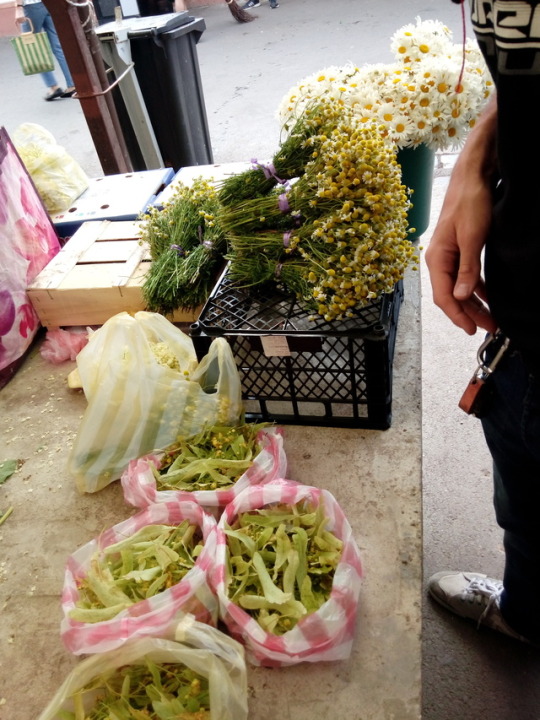
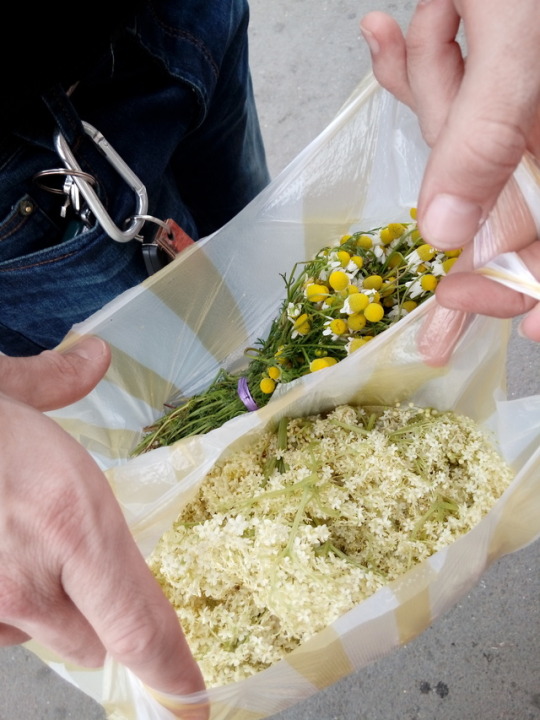
Buying some fresh eldelflower & chamomile at the local market in Sibiu, Romania.
We are going to make some delicious socata with eldelflower 💕
841 notes
·
View notes
Photo

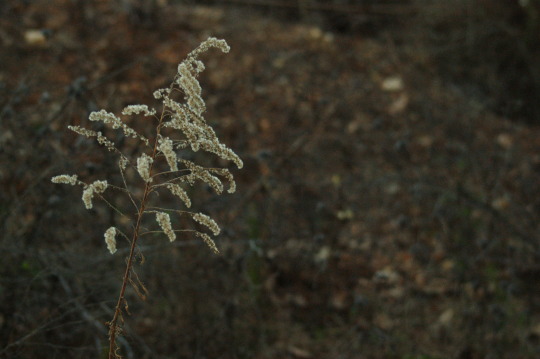

It’s October
And things are beautiful and wonderful
It’s also midterm season, so...
Today, I’m trying to remember to let things go and relax.
Daily mantra: pass the test, but don’t obsess.
:)
5 notes
·
View notes
Photo

#Cabernet Sauvignon grapes at @silveroakcellars just before harvest over the weekend. #wine
7 notes
·
View notes
Quote
Her philosophy is carpe diem for herself, and laissez-faire for others.
F. Scott Fitzgerald, This Side of Paradise (via wordsnquotes)
8K notes
·
View notes
Photo

Harvest time is getting closer
@nacho martinez, 2015
26 notes
·
View notes
Photo

La vida que se esfuma by SergioGarcia6
Frases y citas en español de buen rollo
12 notes
·
View notes
Photo


¡SPANISH WINES YAY!
Spain is classified as old world, so all Spanish wines are old world wines. When we talk about wine, it’s either from the old world (Europe) or the new world (everywhere else).
While Spain is of the old world, Spanish wines wines are often more similar to new world wines than their European siblings (particularly Rioja since it is usually aged in American oak, but we’ll get to that later).
The most confusing difference between old world and new world wines are labeling techniques. When we go to the store we’re usually searching for a merlot, cab sauv, sauvignon blanc, or another grape varietal because that’s the way new world wines are labeled. However, in Spain and in other European countries, wines are labeled according to their region, NOT their grape.
In the past you might have assumed that Rioja was a type of grape when ACTUALLY it’s a region; a DOCa, to be exact. Spain is split up into over 70 DOs (Denominación de Origen) and the Rioja DOCa is a super special DO. DOs are the same thing as ACs (appellation controlée) in France and DOC(G)s [Denominazione di Origine Controllata e (Garantita)] in Italy. They’re basically just wine regions with specific laws as to how the wine can be made, grown, labeled, and sometimes sold within that region.
***Another difference between the old world and the new world are the wine laws. In the U.S. we can practically do anything to our wine, in Europe there are thousands upon thousands of regulations.
***FUN FACT: irrigation is illegal on vineyards in the European Union! (they take their wine pretty seriously)
THERE ARE 7 MAIN WINE REGIONS IN SPAIN
for the sake of time, we’re going to talk about three!
Upper Ebro
Catalonia
and Jerez-Sherry
We’ll start with Upper Ebro tomorrow!
**things to take away from this post**
-old world=Europe, new world=everywhere else
-there are lots of wine laws in old world, not so much in new world
-DOs are wine regions in Spain with specific laws
-old world wines are LABELED according to REGION, NOT grape
[thanks to wine folly for the pics]
0 notes
Photo

Hello friends and followers and seekers of wine knowledge!
You know what’s awesome? Drinking wine on the grass in front of the Eiffel Tower. You know what’s not awesome? Wine snobs!
As some of you may know, my biggest *pet peeve* is wine snobbery, and I think It’s about time we put its ridiculousness to rest.
Together, let’s change the wine conversation from super elitist and intimidating to accepting, non-judgmental, and approachable.
Wine is beautiful. The act of sharing a glass of wine can be a downright religious experience and everyone should feel welcomed to be a part of this communion.
[[communion: the sharing or exchanging of intimate thoughts and feelings, especially when the exchange is on a mental or spiritual level; totally describes the experience of drinking wine together]]
The most valuable thing I learned from my wonderful wine professor, Amy Mumma, wasn’t how to distinguish a right bank from a left bank Bordeaux, but how to talk about wine freely and openly. The world of wine isn’t just for the chunky middle-aged white man who talks down to you at the wine *shoppe*; the world of wine is for the EVERYONE! It’s for men, women, old, young, middle-aged—everyone.
Let’s make this idea of wine + acceptance a reality.
HERE’S what I’m proposing…
I invite you to take a little trip with me around the world. We’ll talk about wine from the old world and the new world in a casual, comfortable, and ACCEPTING way.
Let’s break down the walls of intimidation surrounding the *world of wine* and have a glass from every country, together.
HERE’S the plan….
Each week I’ll post about a new country and the cool things about the wine there!
I’ll find a place to buy a good (and affordable) bottle from the country of the week, AND I’ll tackle the ~potentially~ snobby sommelier at the wine place!
I’ll share said place and wine and then, we’ll taste together and have an open discussion about the wine via Google Hangout on Sunday evening!
Think of it as a ~*virtual wine club*~!
THIS WEEK let’s do…SPAIN!!!!
#virtual wine club#wine club#wine#global#global wine#wine snob#wine snobbery#alcohol#geography#spanish wines#spain
0 notes
Photo
I love this.

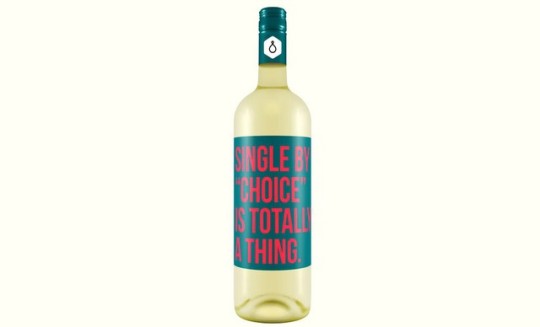

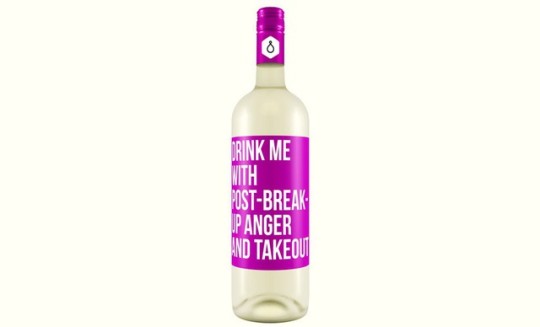
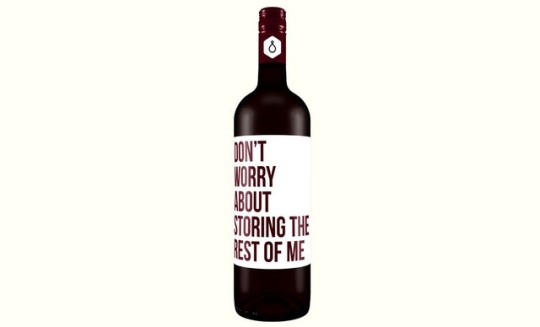
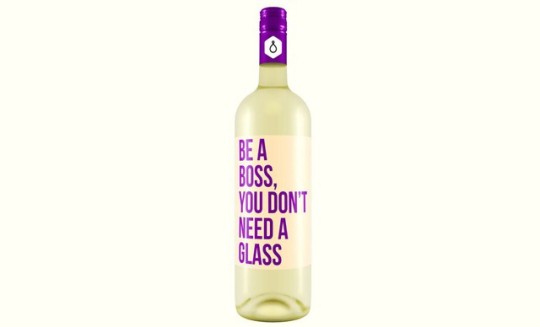




Realistic Wine Labels
The founder of VinePair Adam Teeter and his friend Steve created a list of 26 brutally honest and rude wine bottle labels. The ideas and phrases were conceived based from real life situations, which occurred while they were drinking wine. Created in four days with the help of an illustrator, the bottles feature hilarious phrases, like “Be a Boss You Don’t Need a Glass,” and “You and I Both Know You’ll Be Crying later,” among other drinking-hazard labels.
7K notes
·
View notes
Photo
HOW COOL!!!


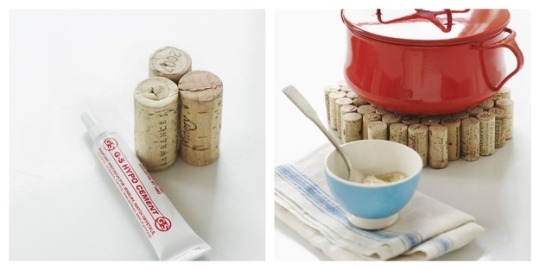


Before you recycle your cork, let’s get creative!
1. Card Placeholder - Great for business and parties.
2. Trivet- Very useful for placing pots into your dining table.
3. Cheese knife - Do you have boring cheese knife? Remove the handle and add a cork!
4. Place mat - This one can be a great addition to your home. Impress your friends and family!
There are more DIY tutorials out there, but we chose these four for your convenience. Great presentation and less than an hour to do. Now get to it!
This post is brought to you by Stars International Investment Corporation.
Main Website | Pinterest | Twitter | Facebook
17 notes
·
View notes
Photo
This looks delicious! I'm feelin a meal repeat!
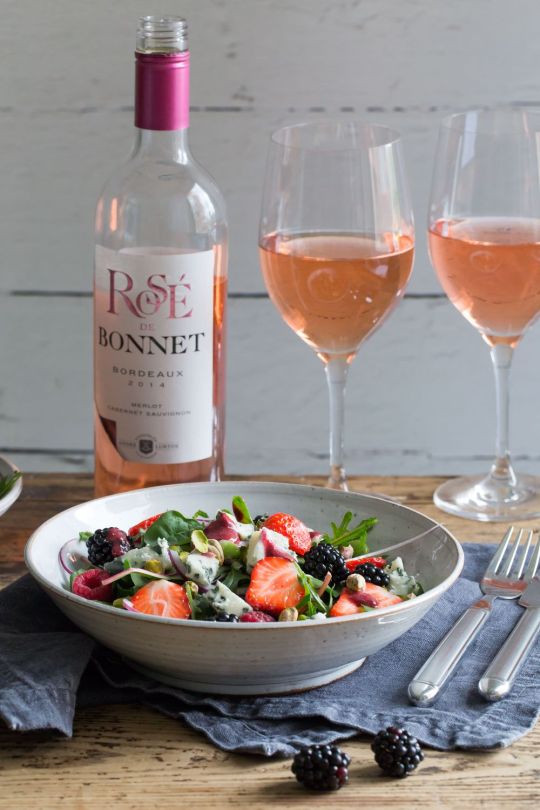
Via madebymary.se
18 notes
·
View notes